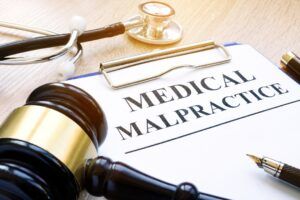The Common Types Of Nursing Malpractice

In the challenging and demanding world of healthcare, nurses serve as the primary caregivers who ensure the well-being of patients. However, sometimes nurses can inadvertently contribute to patient harm due to negligence or oversight, creating a broad spectrum of problems commonly referred to as nursing malpractice.
Let's dive deep into the common types of nursing malpractice, shedding light on its various forms to give you a better understanding of your healthcare rights.
Medication Errors
One of the primary roles of nurses is to administer medicine. These mistakes happen when a nurse gives a patient the incorrect drug or dose. Death, birth abnormalities, hospitalization, or long-term incapacity are all possible outcomes of such a situation for the patient's health.
The failure to accurately confirm a patient's pharmaceutical allergies is a leading cause of medication mistakes. For example, a serious allergic reaction and potential injury to the patient's health can occur if a nurse gives a patient a medication to which the patient is allergic without first checking their allergy history. When a patient suffers harm as a consequence of this kind of carelessness, it becomes nursing malpractice.
Another pharmaceutical error is giving the wrong medicine because someone was careless or misunderstood a prescription. Mistakes in pharmaceutical administration, such as giving the wrong dosage or prescribing the wrong medication to a patient, can lead to this problem. Both scenarios expose the nurse to legal liability because they endanger the patient's health.
Documentation Error
The nursing profession places a premium on precise and up-to-date documentation of all patient health information, including diagnoses, treatments, and prescriptions. On the other hand, future treatment for the patient and even injury could result from nurses who do not conduct it correctly or at all. If the patient suffers harm as a direct result of the nurse's mistakes or failures to act, the patient may have grounds to sue for this type of malpractice.
Nurses must record all pertinent information in patients' records, such as vital signs, prescriptions, and complaints. Other medical mistakes and possible institutional malpractice can result from inadequate or inaccurate documentation of this information. For example, if a nurse does not record a patient's vital signs, the medical staff could not know if the patient's health has changed, which could cause them to wait for a diagnosis or treatment or even hurt them.
The documentation that nurses provide must also be readable, clear, and have a timestamp. The medical team is better able to avoid misunderstandings and miscommunications when paperwork is clear and easy to read.
The timestamp also gives important background information about the patient's status, which is especially useful in urgent cases. The medical staff can miss important details about the patient's treatment if the records are inaccurate. This could put the patient at risk of not receiving timely care.
Failure to Monitor
Failure to monitor occurs when a nurse does not keep a close enough eye on a patient to notice any changes that could indicate an issue. Keeping tabs on a patient's vital signs and overall health status is an important part of a nurse's job. In order to do this, it is necessary to keep detailed records of the patient's status and notify the attending physician of any changes, no matter how small.
Bed sores, forgotten medications, untreated cardiac arrest, and even mortality can result from a nurse's negligence in monitoring a patient. Negligible monitoring by nurses can lead to critical delays in patient care, which can have catastrophic consequences. Therefore, nurses might be sued for malpractice if they do not keep a close enough eye on their patients.
Have you or a loved one been a victim of medical malpractice? At Cardaro & Peek, LLC, our attorneys are dedicated to fighting for justice on your behalf. Reach out to us, and let us shoulder the burden of making sure your rights are upheld.










